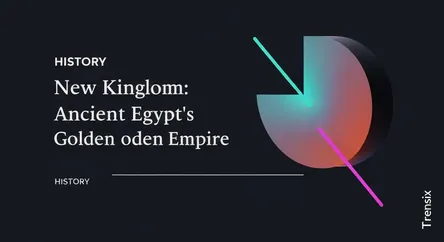History
New Kingdom: Ancient Egypt's Golden Empire

Explore the New Kingdom, ancient Egypt's peak of power and wealth, famed for legendary pharaohs, vast conquests, and monumental building projects.
What is it?
The New Kingdom is the period in ancient Egyptian history between the 16th and 11th centuries BCE, covering the 18th, 19th, and 20th Dynasties. Also known as the Egyptian Empire, it was the most prosperous time for Egypt and marked the zenith of its power. This era began after the expulsion of the Hyksos invaders and was characterized by a series of powerful pharaohs who expanded Egypt's borders to its greatest extent, stretching from Nubia into the Near East. It was an age of immense wealth, extensive trade, and diplomatic connections with other major powers. Famous rulers from this period include Hatshepsut, Thutmose III, Akhenaten, Tutankhamun, and Ramesses II, who left behind an incredible legacy of temples, monuments, and art.
Why is it trending?
The New Kingdom remains one of the most popular and studied periods of ancient history. This is largely due to its legendary pharaohs and the incredible archaeological discoveries associated with them. The 1922 discovery of Tutankhamun's nearly intact tomb sparked a global fascination that continues today. Furthermore, the monumental scale of construction, such as the Karnak and Luxor temples and the tombs in the Valley of the Kings, draws millions of tourists and scholars to Egypt. The era also features dramatic historical events, like Akhenaten's revolutionary attempt to introduce monotheism and the epic battles of Ramesses II, which are subjects of ongoing research and popular media.
How does it affect people?
The legacy of the New Kingdom profoundly impacts our modern understanding of ancient Egypt and history. It was during this period that the term "pharaoh" for the king came into common use, a title now synonymous with all of ancient Egypt. The architectural and artistic achievements continue to influence art and design, while religious developments, including the brief Amarna period of monotheism, provide crucial insights into the evolution of belief systems. For many, the artifacts from this golden age, especially the treasures of Tutankhamun, serve as a tangible link to a distant, powerful civilization, shaping cultural perceptions and fueling a lasting interest in Egyptology.